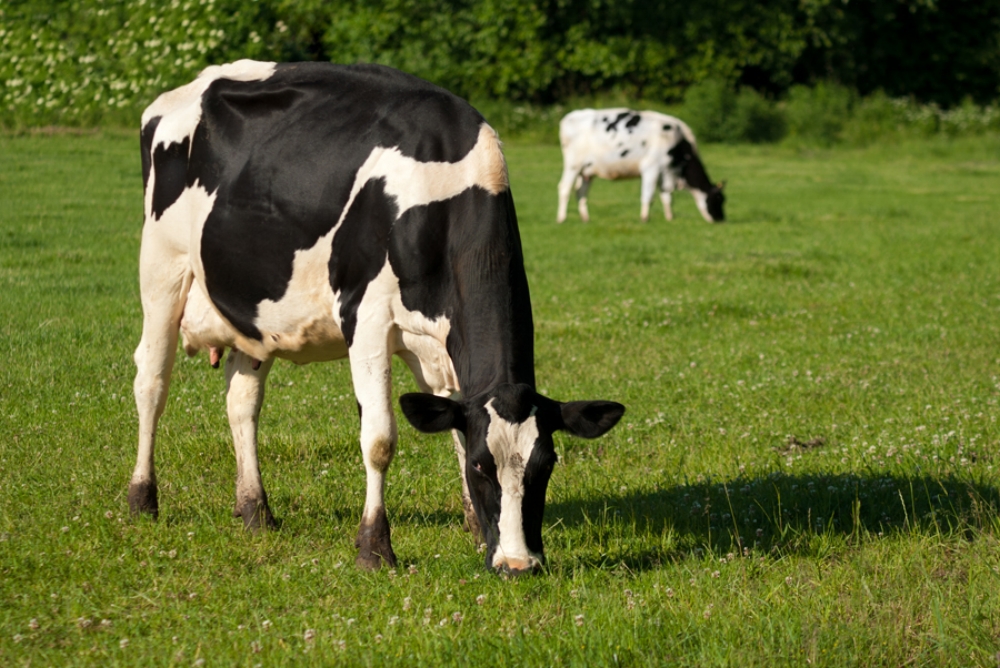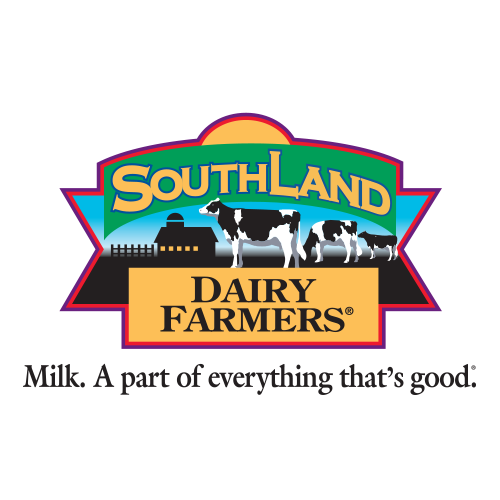Dairy Cattle
Kentucky Dairy Organizations
Kentucky's Dairy Industry
In 2023, Kentucky’s 43,000 milk cows produced 11 million gallons of milk. Kentucky dairy farmers made $198 million from the sale of dairy products, including milk, in 2023.
Kentucky’s dairy cows, on average, produced 6.9 gallons of milk each day. This meant each Kentucky dairy cow was producing enough milk to make 2.8 pounds of butter of 5.9 pounds of cheese!
Kentucky milk is also processed locally; Kentucky has 6 commercial milk processing plants, 3 commercial cheese processing plants, a specialty ice-cream plant, 1 on-farm milk bottling plant, and 6 on-farm cheese makers.
The top dairy cattle counties in the state:
Logan
Barren
Adair
Christian
Warren
Data provided by Kentucky Dairy Development Council.
Source: National Agriculture Statistics Service and Economic Research Commission
Delicious Dairy from Farm to Fridge
Cash Cow
The dairy industry is important to Kentucky. We have about 350 licensed dairy farms, 70,000 heifers, and 45,000 milk cows in the Bluegrass State. Together, they produce 926 million pounds of milk per year! Dairy cows are a special type of cattle that produce more milk than the cattle raised for beef only. There are six kinds of dairy cows in the U.S.: Guernsey, Jersey, Brown Swiss, Holstein, Ayrshire, and Milking Shorthorn. They are all shapes, sizes, and colors, but each breed is prized for its ability to produce wonderful milk. Kentucky saw a 2% growth in total milk production - more than the national average!
Mooving to the Milk Parlor
Did you know that a cow must have a calf before she will produce milk? At about two to three years of age, a heifer will have its first calf. After that, she can become a milking cow. Most dairy cows will have a calf every year. She milks for about 10 months, then takes a two-month break before she has her next calf.
A cow must be healthy and well-fed to make milk. A cow will eat grass, hay, corn, silage, and soybeans, and drink lots of water. In fact, a cow producing milk will eat about 100 pounds of food in one day. Animal nutritionists have a special role in ensuring cows get all the vitamins and nutrients they need to be happy and healthy.
Once a cow begins to produce milk, she must be milked at least twice a day, every day - even on holidays! First, she walks from her house to the milking parlor. Workers clean the cow’s udders and check to make sure she is free from illness. Then, the staff attaches her udders to the milking machine, which gently massages the teat to release the milk. It’s important that humans never touch the milk, so dairies use automated milkers. The milk then moves to a storage tank to cool.
From the Farm to You
An insulated milk truck comes every 1-2 days to take the milk for processing and bottling - this helps to make sure the milk you get is very fresh. The truck delivers milk to the dairy plant, where it is tested and pasteurized to make sure it does not contain anything that might make us sick. Most milk is also homogenized, so the cream in the milk does not separate. After the milk is bottled or placed in cartons, it is shipped to stores, schools, and restaurants.
Dairy’s Plentiful Benefits
Milk is a nutrient powerhouse. It contains calcium, vitamin D, and phosphorus which play an important role in keeping bones and teeth strong. Riboflavin helps turn food into energy and plays a vital role in the development of the central nervous system. Vitamin B12 helps build red blood cells and maintain central nervous system health. And potassium helps keep fluids in your body balanced and helps keep blood pressure normal. Milk also contains Vitamin A, which is important for good vision, clear skin, and a healthy immune system, and niacin, which helps the body turn nutrients into energy. Last but not least, milk contains protein and carbohydrates, which work hand in hand to build and repair muscle and provide energy.
Cheese, yogurt, ice cream, and cottage cheese also come from cow’s milk. Dairy farmers take great care to make sure their cows are happy, healthy, and well-fed so that we can enjoy fresh and delicious milk.
Videos
WKU Smart Holstein Lab
The WKU SmartHolstein Lab is a strategic, synergistic partnership between Holstein Association USA and Western Kentucky University Department of Agriculture and Food Science designed to be a research, development, and demonstration center for the dairy industry
Click the image to learn more!













